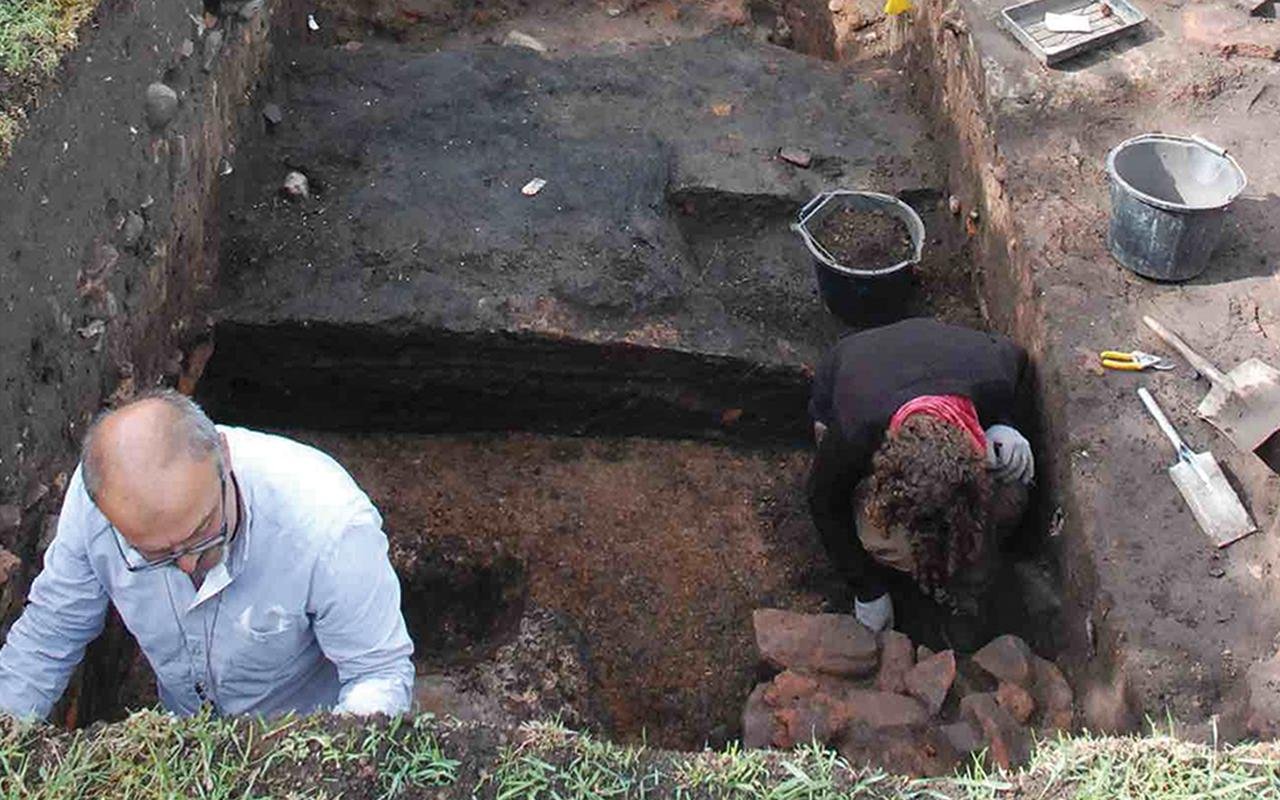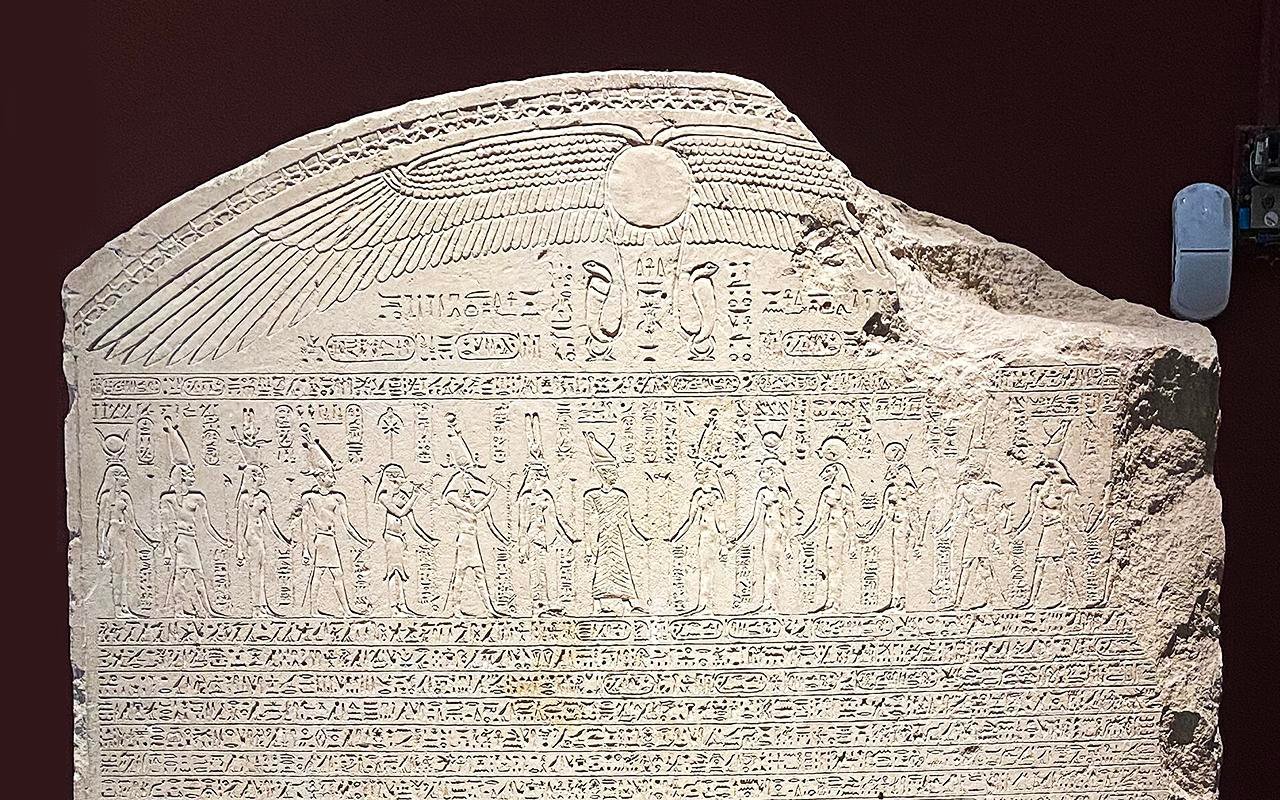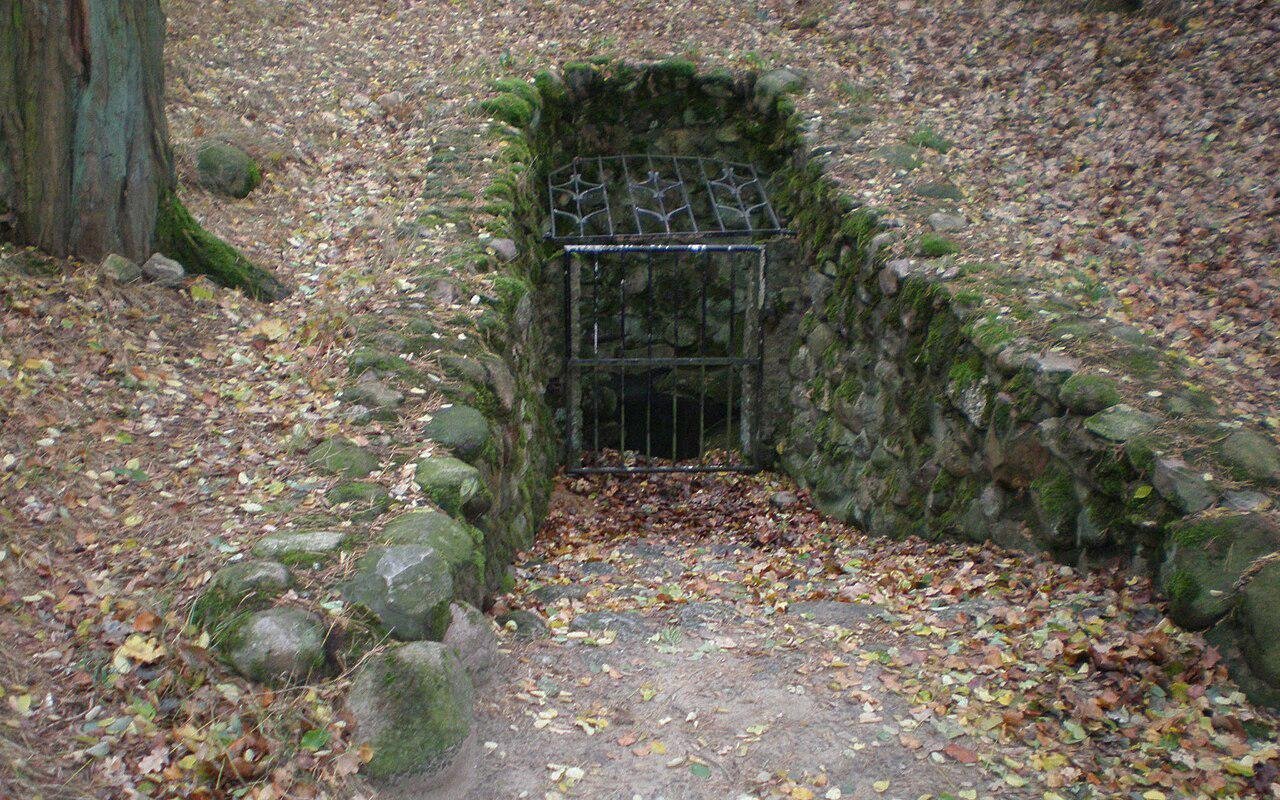A 2,300-year-old gold ring set with a polished red garnet stone was uncovered in the City of David in Jerusalem, shedding more light on the wealth and practices of the city’s inhabitants during the Hellenistic era. The discovery, made in a joint excavation by the IAA and Tel Aviv University in Jerusalem Walls National Park, marks the second of its kind to be found at the site in a year.
 The gold ring uncovered during excavations by the Israel Antiquities Authority in the City of David. Credit; Eliyahu Yanai, City of David.
The gold ring uncovered during excavations by the Israel Antiquities Authority in the City of David. Credit; Eliyahu Yanai, City of David.
The new find was discovered in the foundations of a large ancient building believed to have been built during the late third or early second century BCE. Along with the ring, archaeologists also discovered an impressive collection of jewelry, including several bronze earrings, a decorated gold bead, and a gold earring with the image of a horned animal. The artifacts were found in the same layer of stratigraphy, which suggests a deliberate and culturally significant deposition.
Efrat Bocher, one of the excavation managers, said, “This is the first time that we have found in Jerusalem such a large ᴀssemblage of gold jewelry from that period. This displayed wealth is very rare in any archaeological layer, and it attests to the wealth of Jerusalem and the high standard of living of the city’s residents during this period.”
 The gold ring uncovered during the Israel Antiquities Authority excavations in the City of David. Credit: Reut Vilf, City of David
The gold ring uncovered during the Israel Antiquities Authority excavations in the City of David. Credit: Reut Vilf, City of David
One theory gaining traction among researchers is that the jewelry may have been placed under the building’s floors as part of a symbolic tradition. Dr. Marion Zindel, who studied the rings, explained, “One of the possibilities now being examined is that the jewelry was in the context of the execution of a well-known Hellenistic period custom in which betrothed women would bury jewelry and other childhood objects in the house foundations as a symbol of the transition from childhood to adulthood.”
 The gold earring and gold bead uncovered in the City of David from the same period. Credit: Clara Amit, Israel Antiquities Authority.
The gold earring and gold bead uncovered in the City of David from the same period. Credit: Clara Amit, Israel Antiquities Authority.
The style and shape of the jewelry also convey a greater cultural story. Researchers noted that the use of gold paired with richly colored gemstones like garnet reflects the influence of fashion trends from Eastern cultures like Persia and India. These stylistic currents were enabled by the expansion of trade networks following the conquests of Alexander the Great.
Rivka Lengler, one of the members of the excavating team at the time of the discovery of the ring, said, “We sifted the dirt through a sieve, right near the excavation area, and suddenly Ben, who works with me, pulls a gold ring out of the dirt. At first, he was sure it must be a modern item dropped by one of our excavators, but when I examined the ring, I immediately ᴀssessed it as something ancient.”
 Excavation of the Givatiparking lot in the City of David, where the ring was found. Credit: Maor Ganot, City of David
Excavation of the Givatiparking lot in the City of David, where the ring was found. Credit: Maor Ganot, City of David
Eli Escusido, Israel Antiquities Authority Director, emphasized the cultural significance of the find: “The discovery of the golden rings from the time of the Second Temple in the City of David is tangible evidence of the wealth, beauty and importance of Jerusalem even thousands of years ago.”





